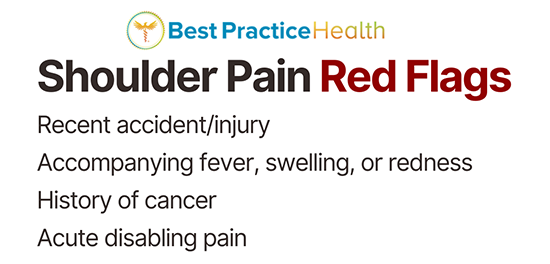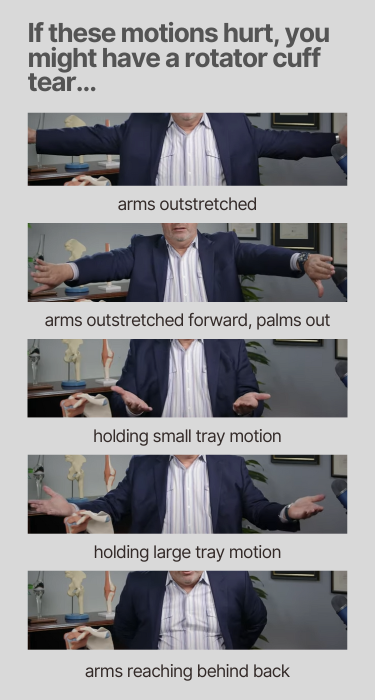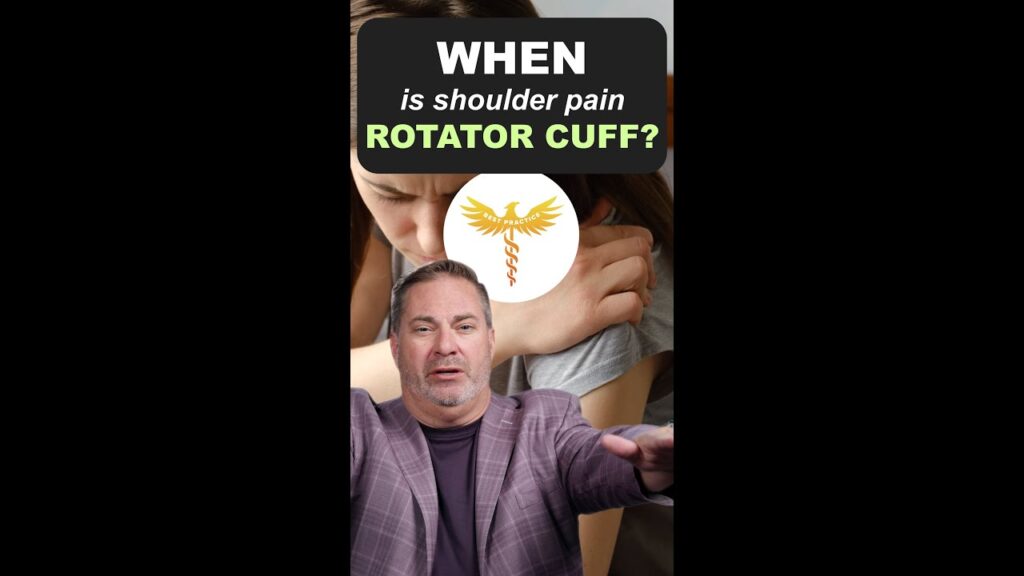
What to do when you think you have a rotator cuff tear
What to do when you think you have a rotator cuff tear https://bestpracticehealth.tv/wp-content/uploads/2024/01/banner-rotator-cuff-tear-1024x285.png 1024 285 Best Practice Health TV Best Practice Health TV https://bestpracticehealth.tv/wp-content/uploads/2024/01/banner-rotator-cuff-tear-1024x285.png
A rotator cuff tear is a tear in soft tissue of the shoulder joint. Rotator cuff injuries are usually caused by an injury such as breaking a fall with your arm or while lifting something in an awkward position.
Not all rotator cuff tears are caused by accidents; degenerative tears can also happen when a tendon is worn down over time. Body builders, swimmers, and pitches are more at risk.
Partial tears can heal on their own while complete tears require surgery to avoid permanent shoulder pain and loss of range of motion.
If you’re experiencing shoulder pain and you suspect you might have a rotator cuff tear, here’s what you can do at home.
1. Rule out an emergency.
- Shoulder pain is rarely an emergency, but it’s important to be sure. There are key red flags you can look for when assessing your shoulder pain.
- If your shoulder pain is accompanied by a fever, swelling, arm weakness or redness, you should go to a doctor right away. Additionally, if your shoulder pain is preventing you from doing daily activities like getting dressed yourself, see a doctor immediately.

- It’s also important to know that not all pain in the shoulder is shoulder pain. Breast tumors, neck pain, lung cancer, heart attack, ectopic pregnancy, and even laparoscopic surgery are rare causes of pain in the shoulder.
- Exactly why these conditions cause pain that feels like it’s in your shoulder is unclear. However, we do know how to tell the difference.
- If passive range of motion of your shoulder reproduces the pain, then it’s coming from your shoulder. What that means is if you relax your arm and have someone take it through a full range of motion and there is no pain, then your pain is coming from something else.
When is shoulder pain the rotator cuff? Watch this video and find out in 20 seconds!
2. Self assess your condition.
- Once you’ve confirmed that your pain is not an emergency and it’s definitely coming from your shoulder, you’re not done yet. Biceps tendinitis, acromioclavicular separation/arthritis, and a labral tear all feel similar to a rotator cuff pain.
- The first clue that you have a rotator cuff tear is that your shoulder pain makes it hard to sleep at night.
- Additionally, the muscles of the rotator cuff control the shoulder movement to raise your hand or put it behind your back. If movements like overhead activity or reaching to scratch your back reproduce your shoulder pain, then there’s a good chance you have a rotator cuff pain.
- Aside from the pain, weakness as well as popping or clicking sensations when moving your arm are also symptoms.

- Although these measures can give you an idea, the only way to know for sure is to have an MRI. But most doctors recommend you treat the condition at home for three weeks before moving on to imaging.
Learn more: All about rotator cuff tears from the American Academy of Orthopedic Surgeons
3. Try home care.
- Once you’re fairly certain you have a tear, you can start treating it at home while planning your next steps.
- Rotator cuff tears can be either partial or full thickness. A partial tear might be able to heal by itself over four to six weeks. A complete tear will likely require surgery to repair.
- If your pain is manageable, then you can try non-steroidal anti-inflammatory medications (NSAIDs, like Aleve or ibuprofen) as well as hot and cold packs to relive pain. Schedule to see your doctor within a week or two.
- If the pain is severe, you can’t sleep and it makes tasks painful, then see an orthopedic surgeon right away.
- You should also consider your personal circumstances. Athletes with rotator cuff injuries may want to see a doctor sooner so they can get physical therapy and get back in the game as soon as possible.
4. If nothing works, go to the doctor.
- Once a few weeks of conservative treatments have failed to relieve your pain, you should go to the doctor or physical therapist. It’s important to be proactive with a rotator cuff tear because if you have a complete tear and need surgery delay may prevent you from getting completely better.
- The best test to determine if you have a rotator cuff tear is magnetic resonance imaging (MRI).
- The physical examination is suggestive, but not definitive. X-rays won’t show the muscles of the rotator cuff, so they can’t be used to visualize a tear. If you can’t have an MRI, a CT scan is not as sensitive, but it can be an alternative.
- Although x-ray can’t confirm a rotator cuff tear, your doctor may obtain one first to rule out severe arthritis.
- Complete rotator cuff tears can’t heal on their own and require Rotator Cuff Tear Repair. When considering an orthopedic doctor or surgeon, Best Practice is an orthopedic surgeon who is double board certified in Sports Medicine. Rotator cuff tear repair is highly effective at relieving shoulder pain. In addition, after rotator cuff tear repair and most patients can get back to normal range of motion, and even sports.
- Rotator cuff tears can be brutal. But by taking stock of your treatment options, you can get back to a life without shoulder pain and preserve normal shoulder function.
- Posted In:
- Knowledge Center







